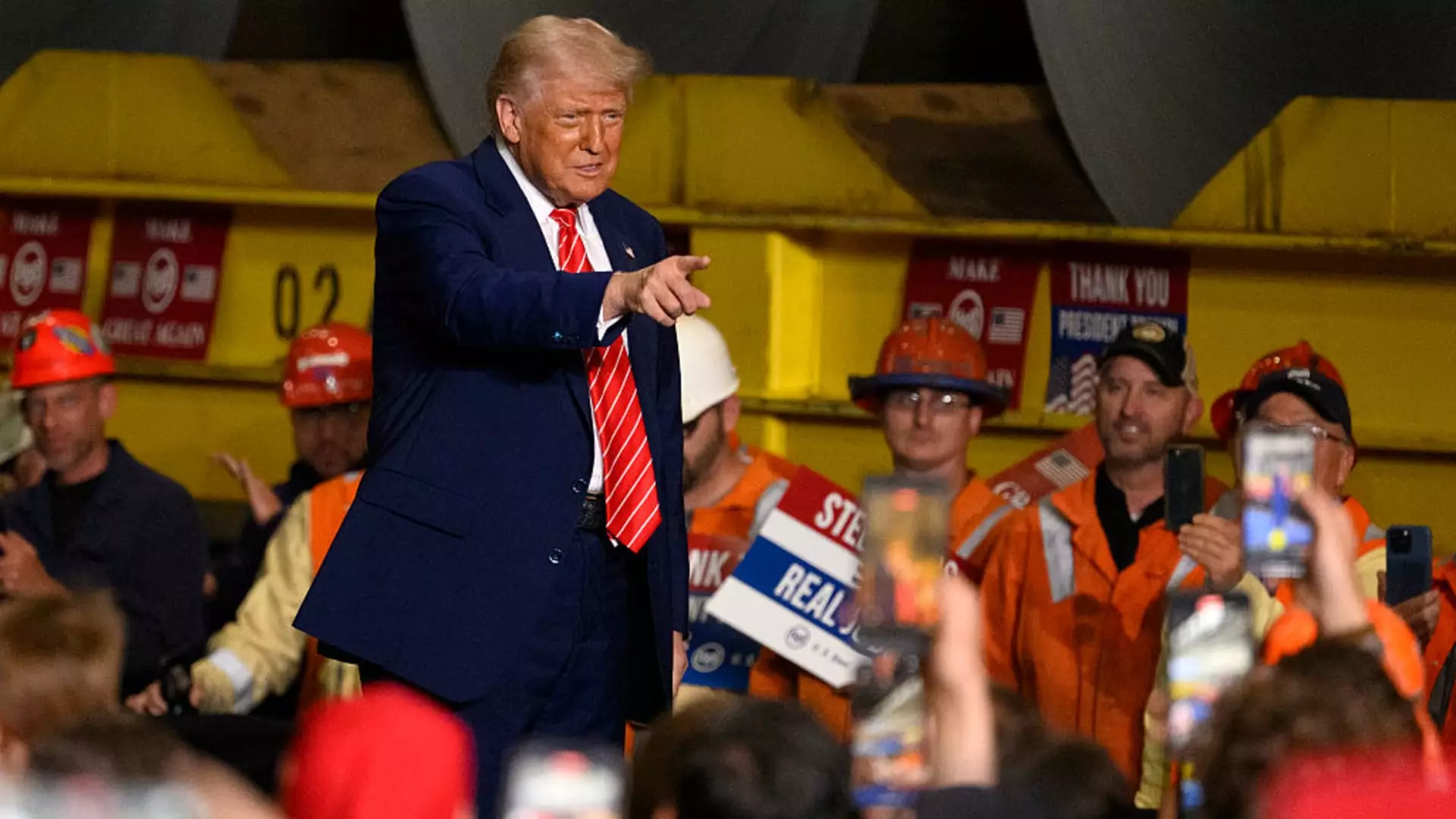In a dramatic escalation of economic tensions, President Donald Trump recently announced his plans to double tariffs on steel imports from 25% to a staggering 50%. This move, akin to tossing a lit match into a pool of gasoline, has sent shockwaves through both the American and European economies. The European Union (EU) has not hesitated to rebuke this decision, framing it as destructive to the broader goal of achieving a negotiated settlement in the ongoing trade war. The repercussions of Trumps’ tariffs are multifaceted, not only damaging to global trade relationships but also profoundly detrimental to consumers and manufacturers alike.
This reaction from the EU represents a critical standpoint against unilateral trade policies that threaten to devolve into a full-blown trade war. The EU spokesperson has made it clear—this tactic represents a fundamental misjudgment. Rather than fostering negotiation and dialogue, Trump’s approach has driven a wedge deeper into the cooperative fabric of international trade. By choosing a path of confrontation, the administration risks undermining the fragile economic stability that has drawn tangible benefits from multilateral trade agreements.
Vicarious Victims: The Cost of Tariffs
One of the essential voices to emerge from this crisis is that of the United Steelworkers union (USW). They aptly identify the fallout as not just an abstract economic issue but a real threat to jobs and communities in Canada. Marty Warren, the USW National Director for Canada, emphasizes the urgency of the situation, pointing out that thousands of jobs are at stake. When tariffs rise, it is often the working-class individuals who bear the brunt of punitive economic measures, a reality that cannot be overstated.
The ramifications of Trump’s tariff strategy extend beyond immediate costs. Industries reliant on steel and aluminum, from automotive to construction sectors, are now grappling with increased input costs that could either diminish profit margins or lead to inflated consumer prices. The domino effect is likely to resonate through the economy, imposing challenges that will inevitably be passed down to the everyday consumer. Increased prices don’t only burden the individuals purchasing steel products—they also lead to less competitive companies which can spiral into a loss of jobs and economic stagnation.
Countermeasures: A Titan’s Retort
The EU, facing a crisis of its own making, has hinted that it is ready to respond with countermeasures if a conciliatory resolution is not reached. The timing of these potential measures, set to kick in as early as July, adds another layer of complexity to an already intricate situation. The dynamics of international diplomacy are often likened to a chess game, and it seems that both sides are gearing up for the next round of skirmishes.
There’s irony in the fact that, on one hand, Trump’s administration calls for negotiations to resolve trade disputes but concurrently raises tariffs that create a hostile environment for diplomacy. It begs the question: can negotiations thrive amidst such stark conflict? As economic warfare intensifies, the appeal of multiparty dialogue diminishes, replaced instead by a cycle of retaliatory measures that protects nothing but rigid national pride.
The Legal Snag: Court Intervention
Adding to the turmoil, the U.S. Court of International Trade has intervened, temporarily halting much of Trump’s country-specific tariffs, claiming an overreach of presidential authority. This judicial pushback underscores a growing tension within the U.S.’s own regulatory framework and highlights the absence of a unified trade strategy. While Trump has sought to use tariffs as leverage, the court’s decision reveals internal divisions that may hinder his plans and further complicate international relations.
The situation signifies a crucial turning point, where legal constraints could challenge executive overreach and offer a reprieve to those impacted by the tariffs. For all the bravado projected by the White House, the legal entanglements serve as a reminder that policy enactment can, and often should, be checked by ethical and constitutional considerations.
Amidst this volatile landscape, the question that looms large is whether a more cooperative and constructive approach to trade could yield a path forward, one that doesn’t sacrifice the livelihood of workers and industries for the sake of policy bravado. These are not merely economic numbers and tariff percentages; they represent the very fabric of daily lives, woven into the larger narrative of globalization and interconnectedness.


Leave a Reply